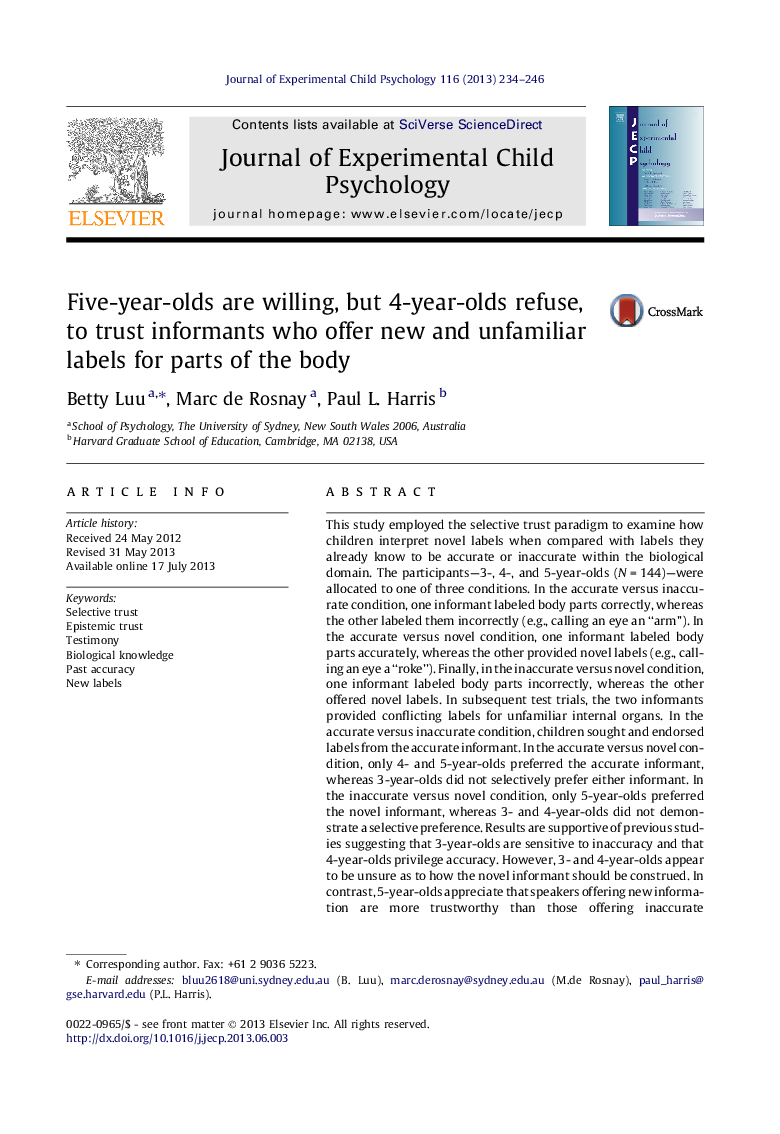| Article ID | Journal | Published Year | Pages | File Type |
|---|---|---|---|---|
| 10453081 | Journal of Experimental Child Psychology | 2013 | 13 Pages |
Abstract
This study employed the selective trust paradigm to examine how children interpret novel labels when compared with labels they already know to be accurate or inaccurate within the biological domain. The participants-3-, 4-, and 5-year-olds (NÂ =Â 144)-were allocated to one of three conditions. In the accurate versus inaccurate condition, one informant labeled body parts correctly, whereas the other labeled them incorrectly (e.g., calling an eye an “arm”). In the accurate versus novel condition, one informant labeled body parts accurately, whereas the other provided novel labels (e.g., calling an eye a “roke”). Finally, in the inaccurate versus novel condition, one informant labeled body parts incorrectly, whereas the other offered novel labels. In subsequent test trials, the two informants provided conflicting labels for unfamiliar internal organs. In the accurate versus inaccurate condition, children sought and endorsed labels from the accurate informant. In the accurate versus novel condition, only 4- and 5-year-olds preferred the accurate informant, whereas 3-year-olds did not selectively prefer either informant. In the inaccurate versus novel condition, only 5-year-olds preferred the novel informant, whereas 3- and 4-year-olds did not demonstrate a selective preference. Results are supportive of previous studies suggesting that 3-year-olds are sensitive to inaccuracy and that 4-year-olds privilege accuracy. However, 3- and 4-year-olds appear to be unsure as to how the novel informant should be construed. In contrast, 5-year-olds appreciate that speakers offering new information are more trustworthy than those offering inaccurate information, but they are cautious in judging such informants as being “better” at providing that information.
Related Topics
Social Sciences and Humanities
Psychology
Developmental and Educational Psychology
Authors
Betty Luu, Marc de Rosnay, Paul L. Harris,
